Abstract
1. The mechanism of oscillations at low membrane potentials in Purkinje fibres has been investigated using voltage clamp experiments.
2. The oscillations are generated by time-dependent variations in an outward current component, ix1, that is activated over the voltage range -40 to 10 mV. During normal activity, this current is responsible for initiating full repolarization to the resting potential (Noble & Tsien, 1969b) so that the oscillations represent a failure of the normal repolarization process, probably as a consequence of a small change in background (leakage) current.
3. These oscillations are distinct from the normal pacemaker activity of Purkinje fibres which is generated by a separate time-dependent current, iK2 (Noble & Tsien, 1968). iK2 shows no time-dependence when the membrane potential variations are entirely positive to -65 mV and cannot, therefore, be involved in the oscillatory activity apart from contributing a background outward current.
4. The amplitude and frequency of the oscillations are very sensitive to applied currents less than 1 μA/cm2. Larger currents abolish the oscillatory activity.
5. The mechanism of the oscillations is discussed in relation to the possible mechanisms underlying the natural pacemaker activity of the sino-atrial (SA) node.
Full text
PDF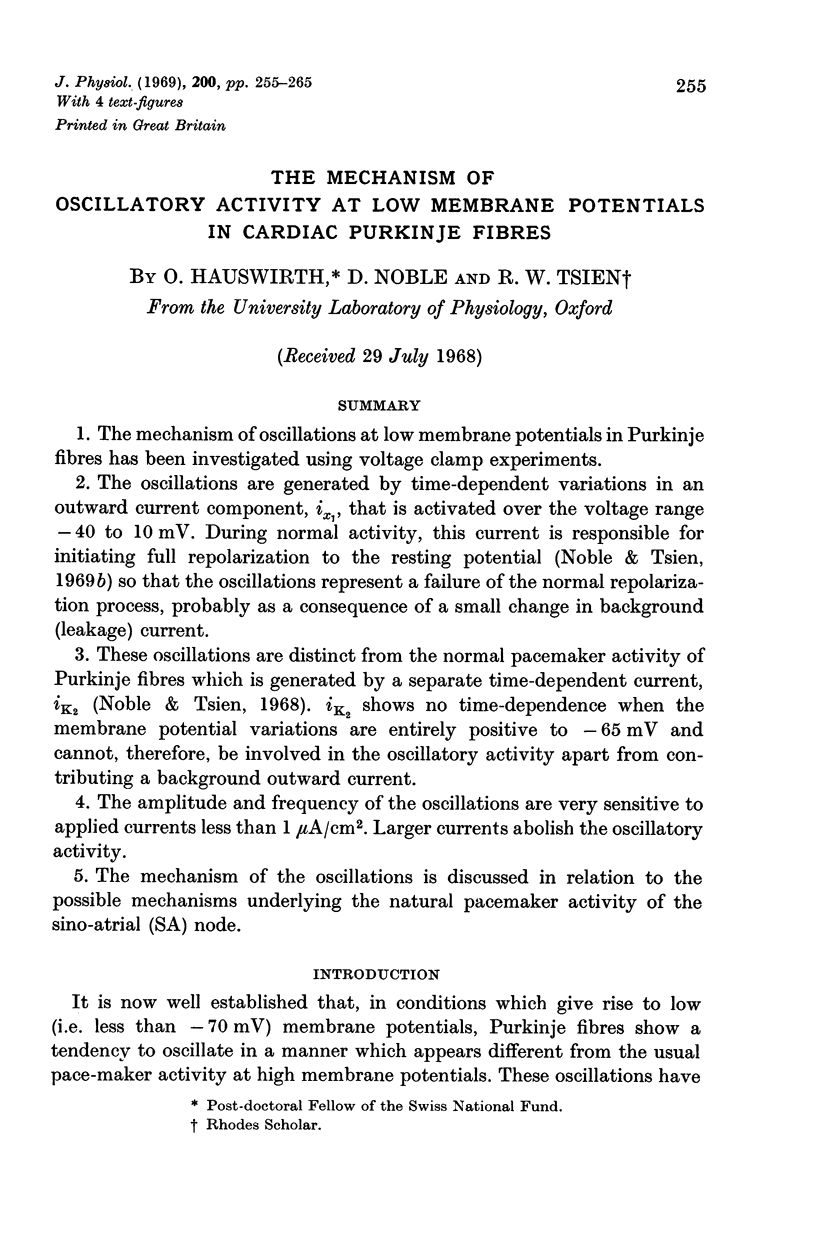
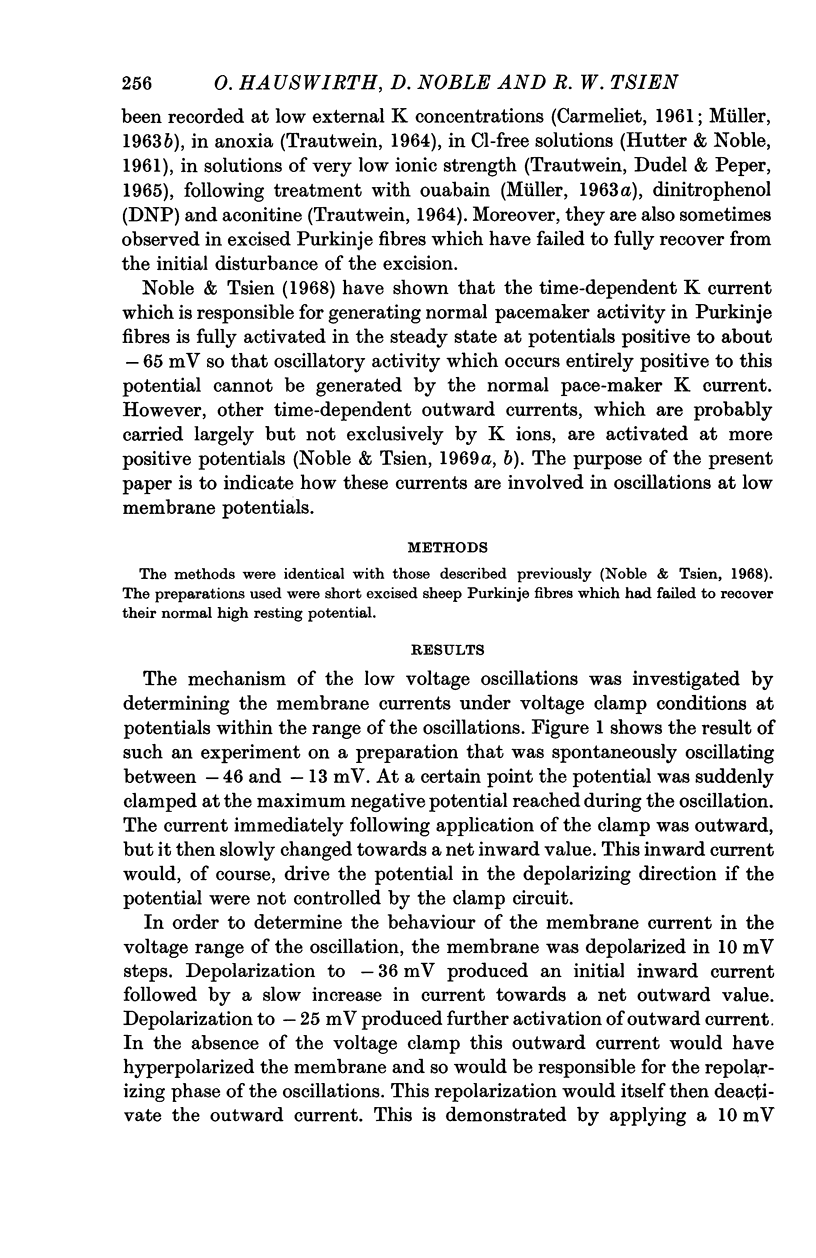
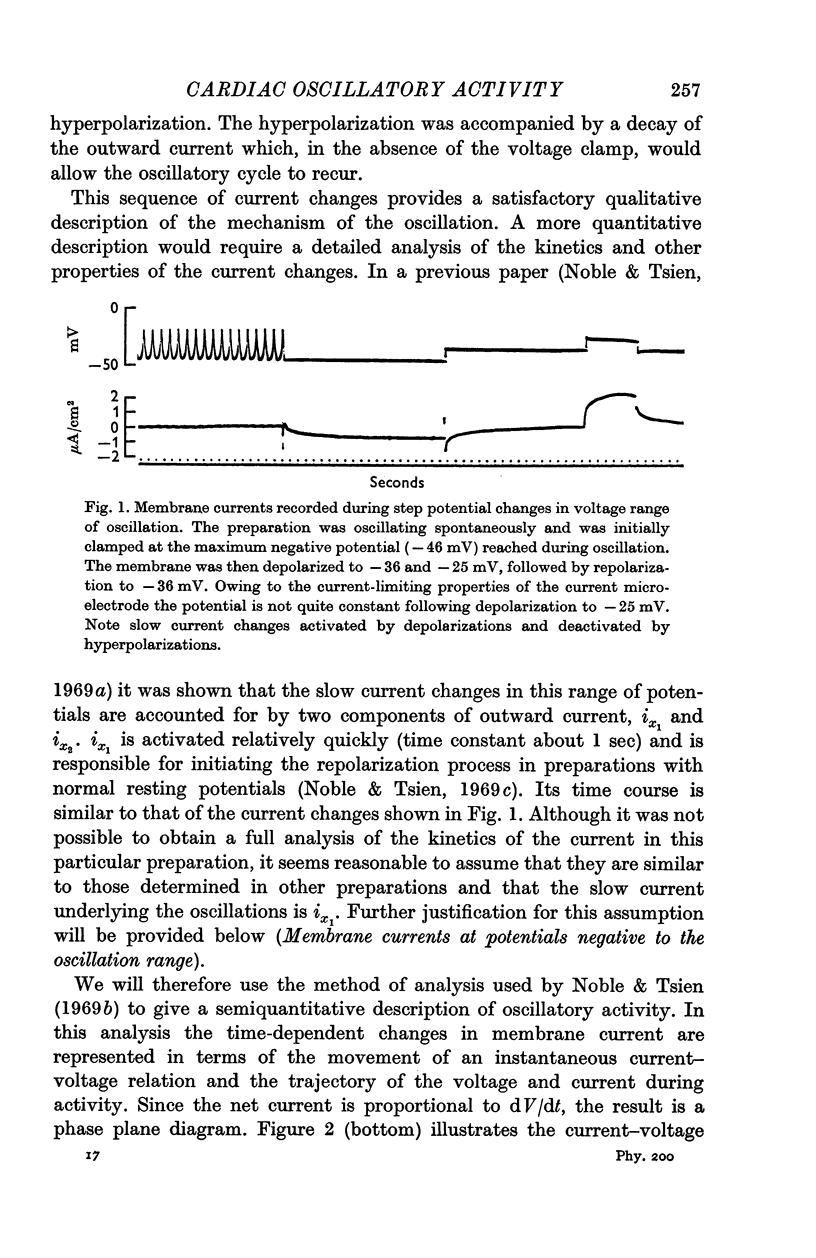
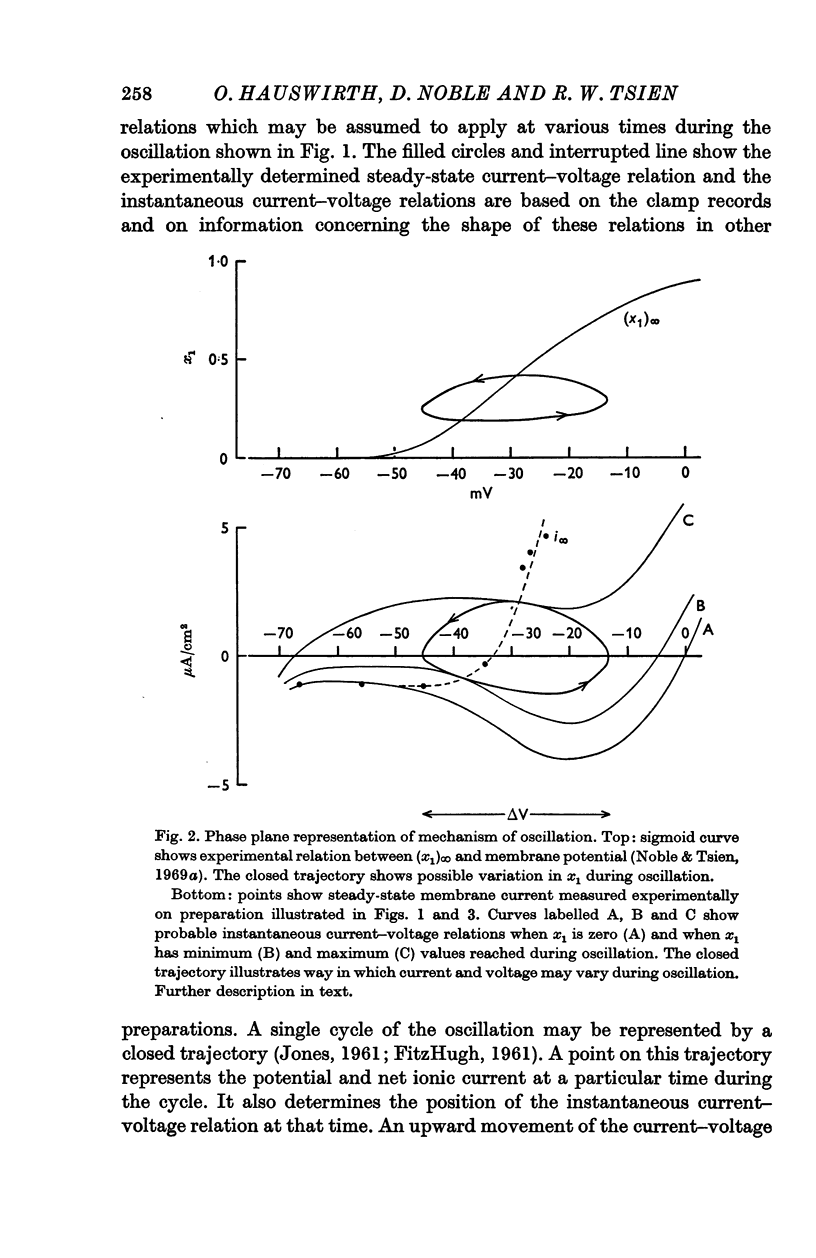
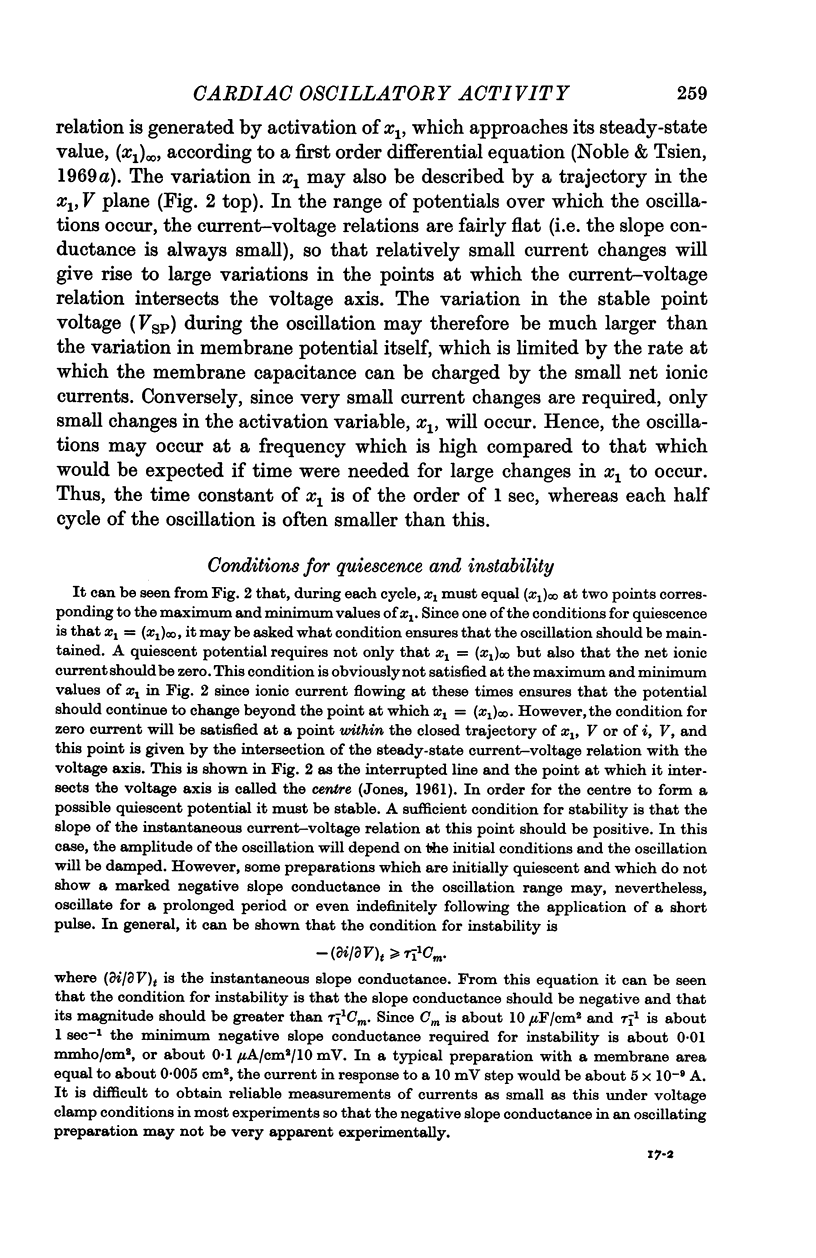
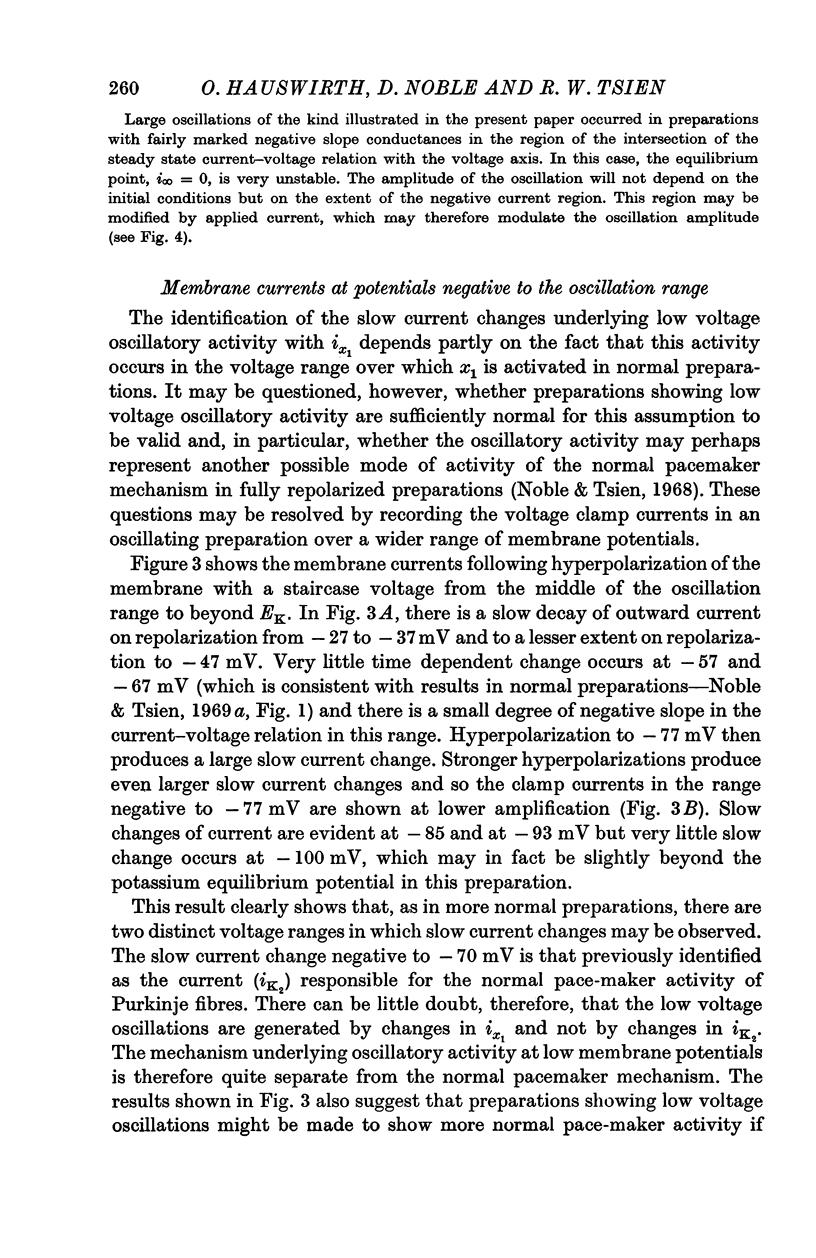
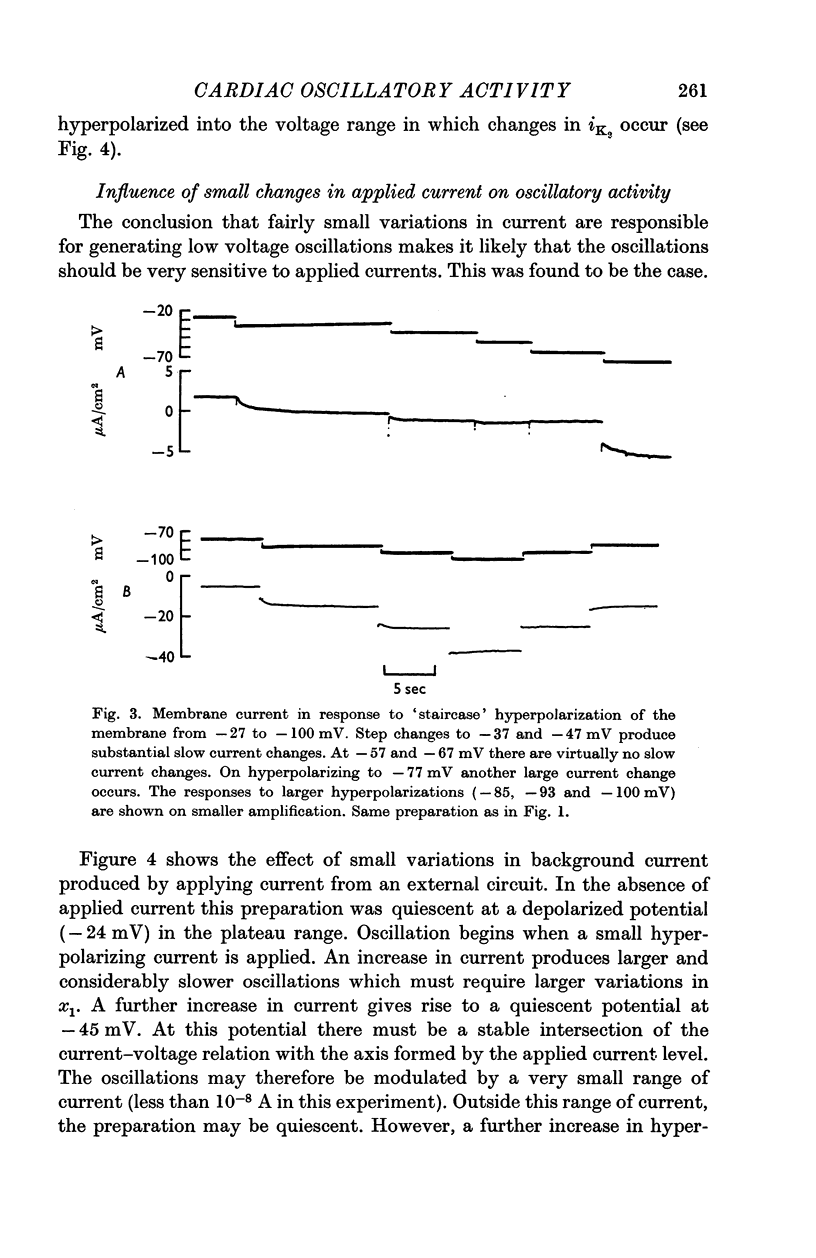
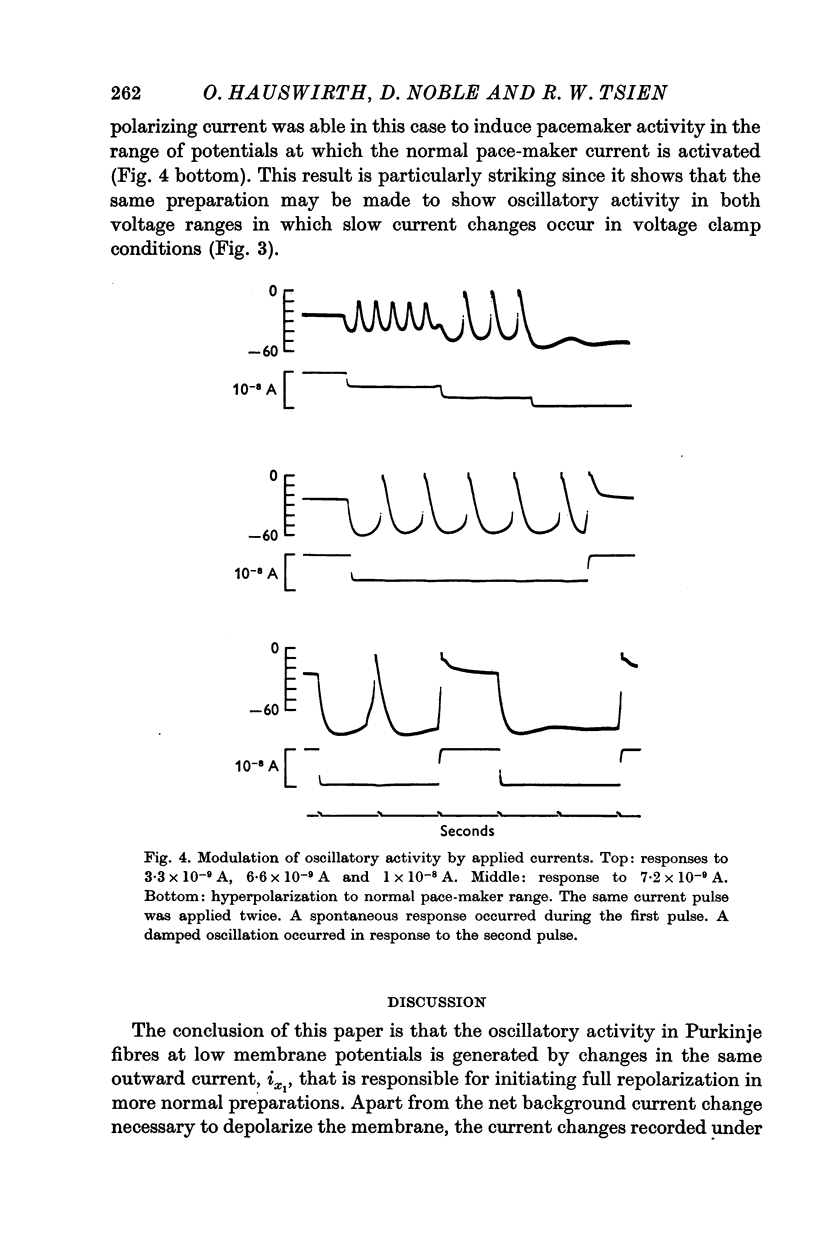
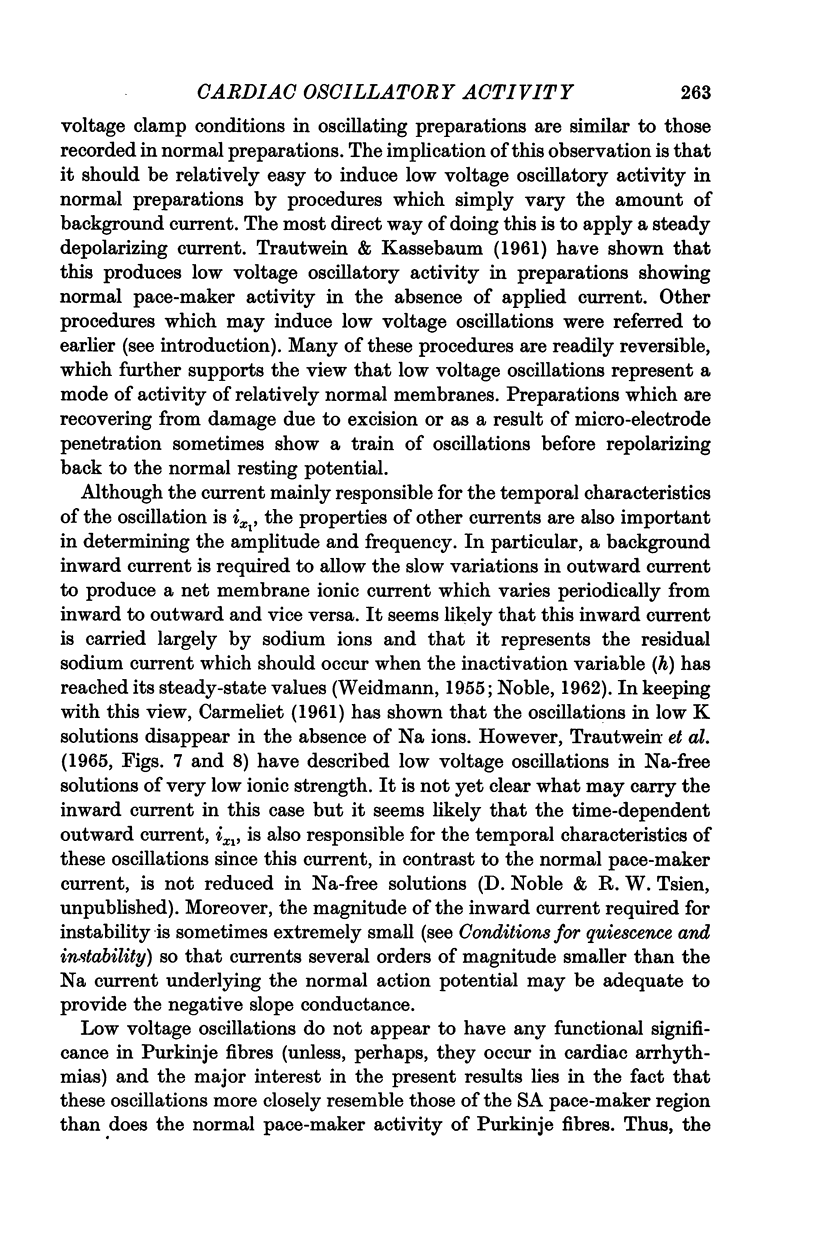

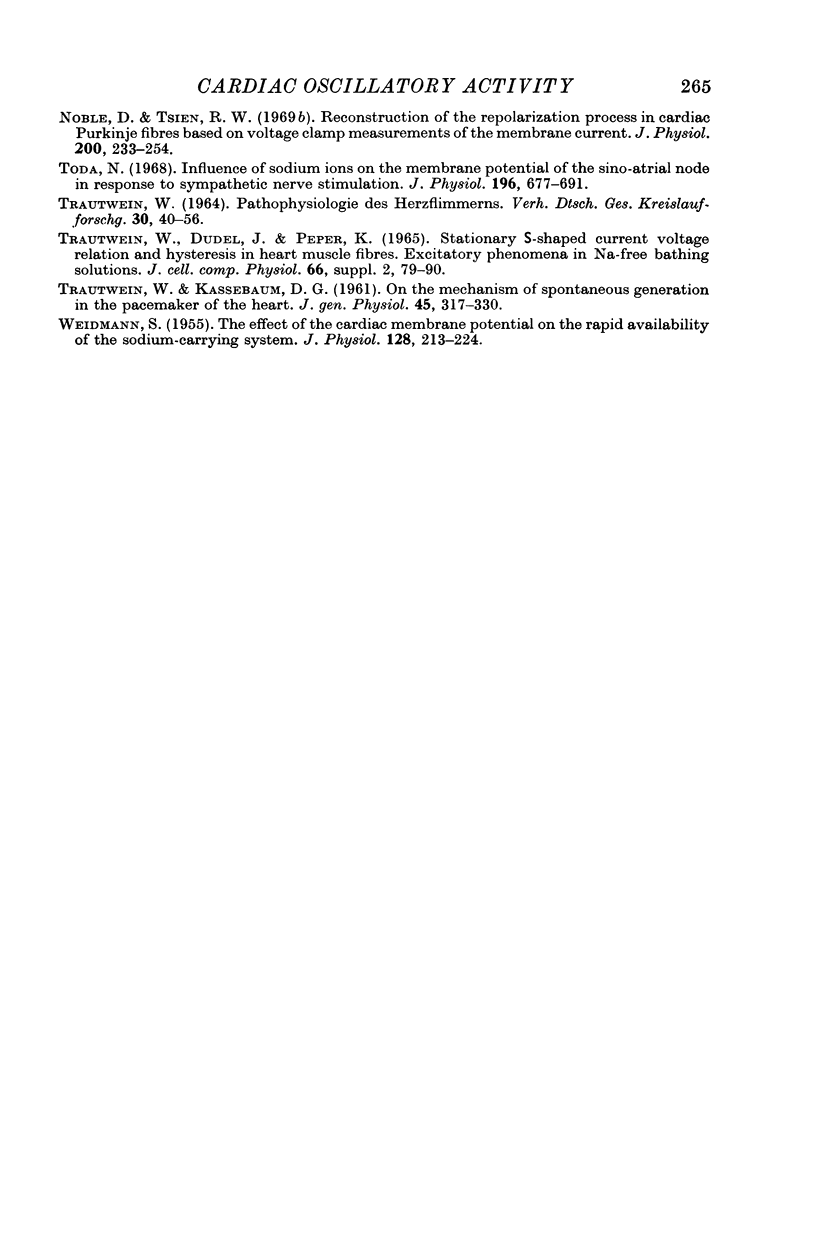
Selected References
These references are in PubMed. This may not be the complete list of references from this article.
- CARMELIET E. E. Chloride ions and the membrane potential of Purkinje fibres. J Physiol. 1961 Apr;156:375–388. doi: 10.1113/jphysiol.1961.sp006682. [DOI] [PMC free article] [PubMed] [Google Scholar]
- Fitzhugh R. Impulses and Physiological States in Theoretical Models of Nerve Membrane. Biophys J. 1961 Jul;1(6):445–466. doi: 10.1016/s0006-3495(61)86902-6. [DOI] [PMC free article] [PubMed] [Google Scholar]
- HUTTER O. F., NOBLE D. Anion conductance of cardiac muscle. J Physiol. 1961 Jul;157:335–350. doi: 10.1113/jphysiol.1961.sp006726. [DOI] [PMC free article] [PubMed] [Google Scholar]
- HUTTER O. F., TRAUTWEIN W. Vagal and sympathetic effects on the pacemaker fibers in the sinus venosus of the heart. J Gen Physiol. 1956 May 20;39(5):715–733. doi: 10.1085/jgp.39.5.715. [DOI] [PMC free article] [PubMed] [Google Scholar]
- MULLER P. [Hypersensitivity and resistance to digitalis]. Schweiz Med Wochenschr. 1963 Aug 17;93:1038–1042. [PubMed] [Google Scholar]
- Müller P. Ca- and K-free solution and pacemaker activity in mammalian myocardium. Helv Physiol Pharmacol Acta. 1965 May;65(1):C38–C41. [PubMed] [Google Scholar]
- NOBLE D. A modification of the Hodgkin--Huxley equations applicable to Purkinje fibre action and pace-maker potentials. J Physiol. 1962 Feb;160:317–352. doi: 10.1113/jphysiol.1962.sp006849. [DOI] [PMC free article] [PubMed] [Google Scholar]
- Noble D., Tsien R. W. Outward membrane currents activated in the plateau range of potentials in cardiac Purkinje fibres. J Physiol. 1969 Jan;200(1):205–231. doi: 10.1113/jphysiol.1969.sp008689. [DOI] [PMC free article] [PubMed] [Google Scholar]
- Noble D., Tsien R. W. Reconstruction of the repolarization process in cardiac Purkinje fibres based on voltage clamp measurements of membrane current. J Physiol. 1969 Jan;200(1):233–254. doi: 10.1113/jphysiol.1969.sp008690. [DOI] [PMC free article] [PubMed] [Google Scholar]
- Noble D., Tsien R. W. The kinetics and rectifier properties of the slow potassium current in cardiac Purkinje fibres. J Physiol. 1968 Mar;195(1):185–214. doi: 10.1113/jphysiol.1968.sp008454. [DOI] [PMC free article] [PubMed] [Google Scholar]
- TRAUTWEIN W., KASSEBAUM D. G. On the mechanism of spontaneous impulse generation in the pacemaker of the heart. J Gen Physiol. 1961 Nov;45:317–330. doi: 10.1085/jgp.45.2.317. [DOI] [PMC free article] [PubMed] [Google Scholar]
- Toda N. Influence of sodium ions on the membrane potential of the sino-atrial node in response to sympathetic nerve stimulation. J Physiol. 1968 Jun;196(3):677–691. doi: 10.1113/jphysiol.1968.sp008529. [DOI] [PMC free article] [PubMed] [Google Scholar]
- WEIDMANN S. The effect of the cardiac membrane potential on the rapid availability of the sodium-carrying system. J Physiol. 1955 Jan 28;127(1):213–224. doi: 10.1113/jphysiol.1955.sp005250. [DOI] [PMC free article] [PubMed] [Google Scholar]


